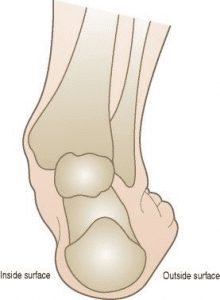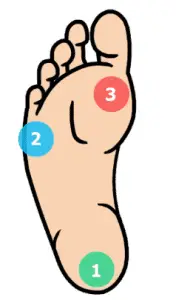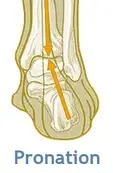THE MYTH ABOUT FOOT PRONATION (FLAT FOOT)
Myth: Foot pronation(flat foot) is the enemy.
In the foot, pronation should occur naturally when we are fully weightbearing on the front leg. Pronation will appear as the foot rolling inward and the arch flattening.
What are the benefits?
- Dissipates the force that the foot receives from the ground.
- Allows the foot to become a stable and mobile adaptor to enhance movement opportunity throughout the body.
- Loads the muscles of the extensor chain (calf, quads, glutes) to convert ground reaction forces into forward momentum so we can move efficiently and without compensation.
So why have I been told this is bad?
So as you are now aware, pronation is very normal and a critical movement to ensure we move and propel ourselves forward efficiently.
What you may have heard someone say to you is that you ‘overpronate’?
Firstly, overpronation is subjective and not as black and white as it is sometimes made out to be. Overpronation has been defined as: ‘a foot that rolls inward towards the medial (inner) arch excessively’.
What we must understand is that a pronation can only happen when the foot has a stable tripod on the ground. This means that the calcaneus (heel bone), 1st metatarsal (big toe knuckle) and 5th metatarsal (little toe knuckle) must all remain in contact with the ground when the foot rolls inwards and the arch flattens.
So, If you have been told you are ‘overpronated’ , it is most likely that your whole foot is ‘everting’ NOT ‘overpronating’.
What is Eversion?
Eversion can be defined as: ‘the process of turning inside-out’.
In pronation your heel must naturally ‘evert’ (sole of the heel will move away from the midline of the body) NOT your whole foot.
If your ‘whole foot’ everts (turns out) you will no longer have a stable foot tripod as the 5th metatarsal (little toe) will lose contact with the ground.
The key to ensuring this does not happen is to provide an environment for the bones of the midfoot (middle of the foot) and forefoot (toes) to experience the opposite motion to that of the heel. This will mean that the foot has an opportunity to truly pronate with a three points of contact on the ground.
So how can you help me do that?
- At Physio fusion we can help guide you to bring your own body into alignment and create an environment in which the healing can begin.
- Foot strengthening exercises.
- Footwear advice.
- Referral to other healthcare specialists for further assistance (e.g. podiatrists).





